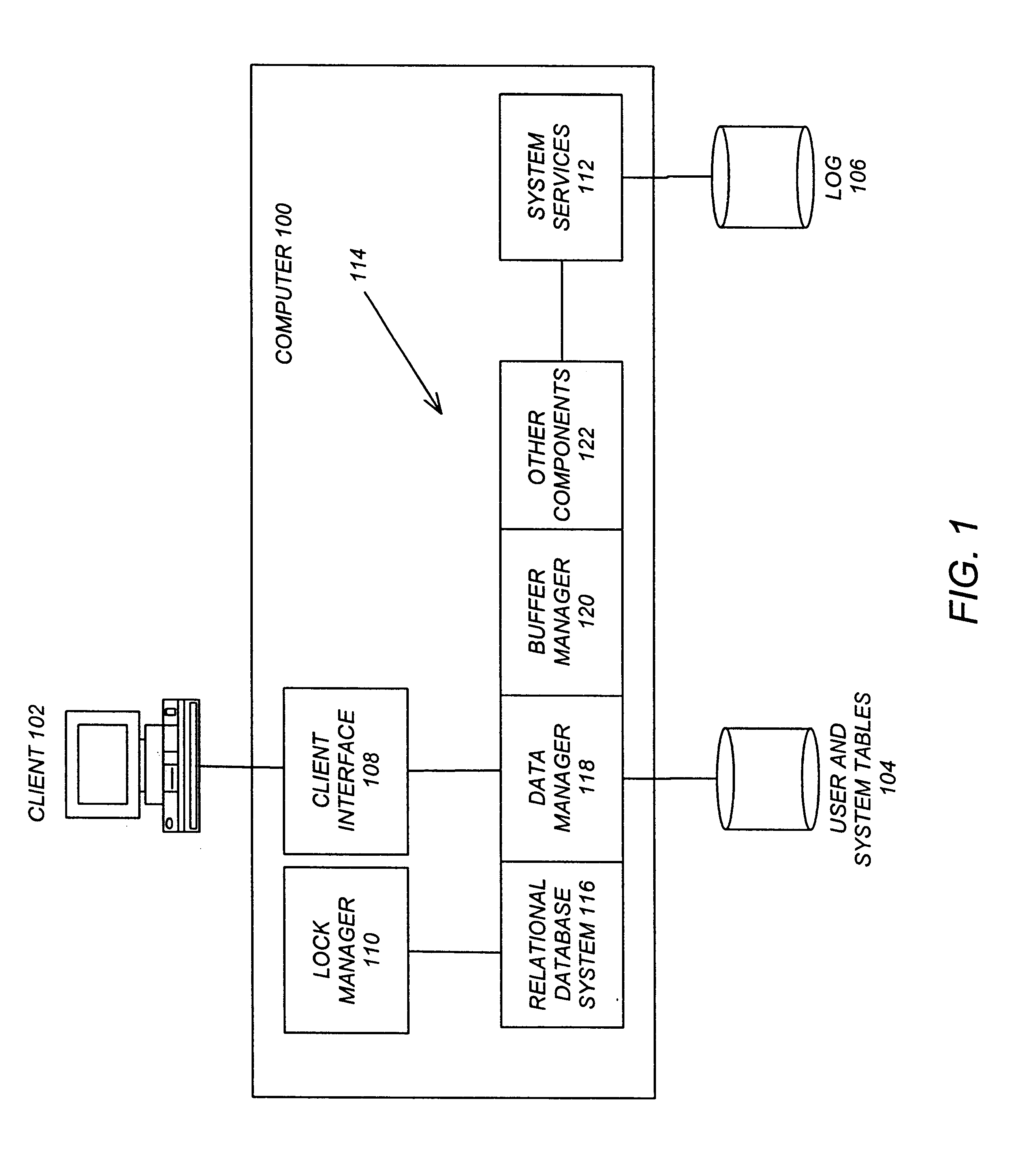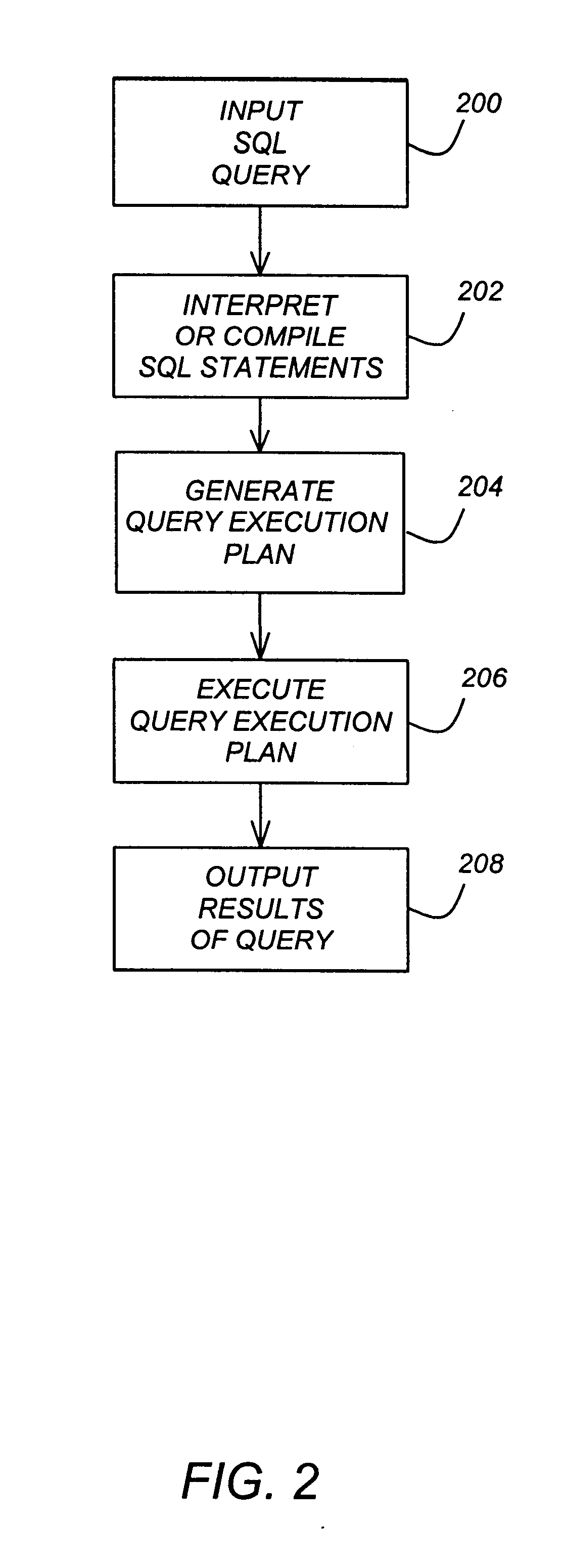Outerjoin and antijoin reordering using extended eligibility lists
a technology of anti-joining and eligibility lists, applied in the field of database management systems, can solve the problems of limiting the application of the technique in commercial systems, complicated change of evaluation order, and limitations in approach
- Summary
- Abstract
- Description
- Claims
- Application Information
AI Technical Summary
Problems solved by technology
Method used
Image
Examples
example 4.1
Additional valid join order: ((R, S), T)
example 4.2
Additional valid join order: (R, (S, (T, U)))
4.2 Reordering Outerjoins, Antijoins, and Inner Joins
This section illustrates how to set the EELs properly when there are outerjoins, antijoins, and inner joins in the operator tree. Antijoins have the following additional conflicting rules: ##EQU13##
Although these rules have been identified in earlier research, this is the first time they are considered together with outerjoin rules in the same framework. All of the conflicts are summarized in FIG. 8. Basically, an outerjoin conflicts with inner joins and antijoins in its null-producing side. An antijoin conflicts with all kinds of joins in the null-producing side and outerjoins "pointing" inward in the preserving side. Inner joins, on the other hand, have no conflicts.
The conflicting matrix of FIG. 8 provides the following information. For an outerjoin predicate to be eligible, all the TABs in the conflicting inner join and antijoin predicates have to be available. For an antijoin predi...
example 4.3
Additional valid join orders: ((R, (S, T,)), U) and (R, ((S, T), U))
PUM
 Login to View More
Login to View More Abstract
Description
Claims
Application Information
 Login to View More
Login to View More - R&D
- Intellectual Property
- Life Sciences
- Materials
- Tech Scout
- Unparalleled Data Quality
- Higher Quality Content
- 60% Fewer Hallucinations
Browse by: Latest US Patents, China's latest patents, Technical Efficacy Thesaurus, Application Domain, Technology Topic, Popular Technical Reports.
© 2025 PatSnap. All rights reserved.Legal|Privacy policy|Modern Slavery Act Transparency Statement|Sitemap|About US| Contact US: help@patsnap.com



